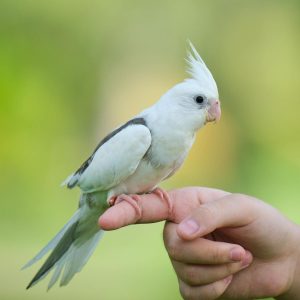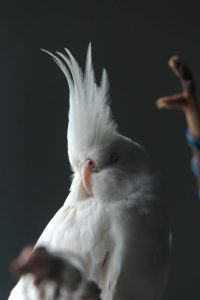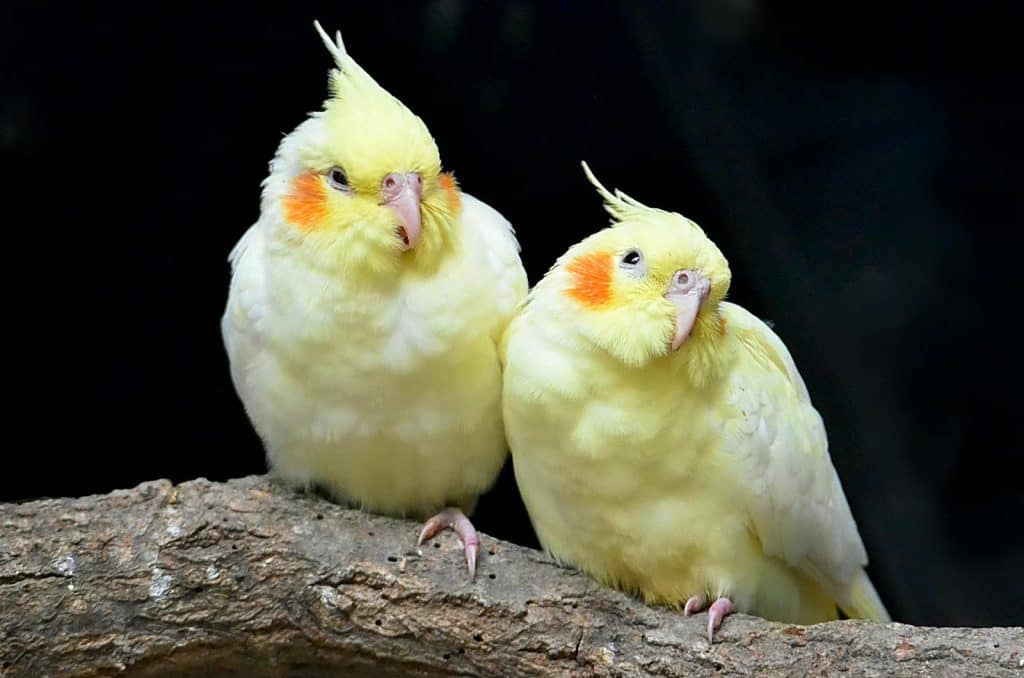As a proud owner of a chirpy cockatiel, I’ve faced my fair share of nips and squawks. Learning how to discipline a cockatiel effectively can seem daunting, but it’s essential for fostering a harmonious relationship with your feathered friend. It’s not just about curbing unwanted behaviors; it’s about understanding and guiding your pet through positive reinforcement and consistent training.
Disciplining a cockatiel doesn’t mean punishment. Instead, it involves setting boundaries and teaching them acceptable behaviors in a way that respects their natural instincts and intelligence. I’ll share some insights and techniques that have worked wonders for me and my little companion, ensuring you both enjoy a happy, healthy coexistence.
How to Discipline a Cockatiel?
Understanding a cockatiel’s behavior is crucial in establishing a disciplined environment that’s stress-free for both you and your pet. Here, I’ll delve into why these intelligent creatures might display undesirable behaviors and highlight common issues you might encounter.

Why Do Cockatiels Misbehave?
Pet birds misbehave primarily due to stress, fear, or discomfort within their environment. They also act out during the breeding season, which might increase their aggression or lead to more pronounced territorial behaviors. When cockatiels feel threatened or stressed, negative behaviors often emerge as a response mechanism. If they are bored or lack mental stimulation, they might develop habits such as feather picking or excessive screeching to cope with their environment.
Furthermore, changes in their routine can upset cockatiels, as these birds thrive on consistency. If I disrupt their daily schedule, it may prompt undesirable behavior, which reflects their attempt to communicate their discomfort or dissatisfaction with the changes.
Common Behavior Issues in Cockatiels
Several behavior issues commonly surface in cockatiels, many of which stem from the bird’s natural instincts and others from environmental factors:
- Biting: Bird bite is often a defense mechanism if a cockatiel feels threatened or fearful. A biting bird might have had a bad past experience with humans or could be reacting to a perceived danger within its current environment.
- Screaming: Cockatiels are naturally vocal, but excessive screaming might indicate a negative behavior that they require more attention or are experiencing some form of distress. It’s important for bird owners to recognize the difference between normal vocalization and signs of stress.
- Aggression: During the breeding season, even the most well-mannered cockatiel can exhibit aggressive behaviors. Aggression might be directed towards other birds, pets, or even their human companions.
- Feather Picking: Caused by factors like stress, illness, or poor diet, feather picking is a behavior that might need a vet’s intervention to treat any underlying health issues.
Identifying the root causes of these behaviors helps in modifying them, using methods that reinforce good behavior and correct the bad without stress. It’s essential, however, always to approach discipline through positive reinforcement, such as rewarding good behavior and maintaining a stable, secure environment for the cockatiel.
Effective Discipline Techniques
Understanding how to discipline a cockatiel involves using a series of effective techniques that reinforce good behavior without causing stress or fear. I’ll explain some of the most effective methods that help establish rules and encourage desirable behavior.
Setting Boundaries and Expectations
Setting clear boundaries and expectations is crucial in shaping a cockatiel’s behavior. Establishing a specific area for the bird, like its cage or a designated perching spot, helps define its personal space and teaches the cockatiel where it can and cannot go.
For instance, training a cockatiel to return to its cage by rewarding it with treats when it complies enhances its understanding of space boundaries. Ensuring the bird’s cage is a comforting environment, equipped with appropriate items like stainless steel perches or cockatiels prefer softwood perches—which cockatiels tend to prefer—also supports positive discipline practices.

Importance of Consistency in Training
Consistency in training is key to successfully disciplining a cockatiel. Cockatiels, as intelligent creatures, benefit from a predictable routine which minimizes their stress and curbs negative behaviors such as screaming or feather picking. Consistent cues and immediate positive reinforcement, such as verbal praises or favorite treats for good behavior, help the cockatiel associate obedience with rewards.
I’ve found that maintaining the same training time each day significantly boosts a cockatiel’s ability to learn and adhere to desired behaviors. Moreover, consistency in the human-parrot bond reassures the bird, fostering trust and minimizing undesired actions like biting or aggressive behavior.
Positive Reinforcement
Positive reinforcement proves essential in guiding cockatiels toward better behavior. I focus on rewarding good actions instead of punishing unwanted ones, ensuring a bond based on trust and mutual respect.
Rewards for Good Behavior
Rewarding a cockatiel when it exhibits good behavior is a cornerstone of positive reinforcement. Here are three effective ways:
- Healthy Treats: Offering a favorite snack, like millet, immediately after desirable behavior encourages repetition of the action. I ensure the treats are healthy and given in moderation to avoid overfeeding.
- Verbal Praise: Cockatiels respond well to affectionate tone and praise. Saying “good bird” in a cheerful voice when my cockatiel behaves correctly reinforces the behavior through social approval.
- Physical Affection: Gentle strokes or light pats can serve as powerful rewards. If my cockatiel enjoys being petted, I use this as a reward for good behavior.
The Impact of Attention and Interaction
Regular, positive interaction significantly impacts a cockatiel’s behavior:
- Consistent Engagement: Routine interaction helps establish trust. Daily scheduled times for playing and training keep my cockatiel mentally stimulated and bonded with me.
- Quality Time: Quality over quantity matters. I focus on engaging my cockatiel in meaningful activities rather than just being in the same room. Interactive toys and learning new tricks together contribute to a positive environment.
- Ignoring Negative Behaviors: When my cockatiel exhibits undesirable behaviors, such as screaming or biting, I avoid giving negative attention. Instead, I redirect the behavior with a toy or initiate a training session, reinforcing that calm behavior brings rewards.
By maintaining consistent, positive reinforcement techniques, the relationship with my pet cockatiel not only thrives but also molds behaviors conducive to a harmonious living environment.
Managing Undesirable Behaviors
In my extensive experience with pet cockatiels, managing undesirable behaviors such as biting or aggression is crucial for maintaining a harmonious relationship. I’ll discuss two effective methods to discourage such behaviors without causing distress to your feathered friend.
Ignoring Negative Behaviors Correctly
Ignoring a cockatiel’s negative behaviors, like biting or bird’s wing feathers picking, efficiently signals that these actions won’t garner any attention. It’s important not to react visibly upset or loudly, as cockatiels might perceive such reactions as attention, inadvertently reinforcing the bad behavior. Here’s how I handle this:
- Remain calm and avoid eye contact when your cockatiel engages in undesirable behavior.
- Quietly place the bird back into its cage if it begins biting or acting out during handling. This action should be gentle but swift to minimize associating the cage with punishment.
- Reinforce good behavior with praise or treats immediately when the bird shows signs of stopping or avoiding the bad behavior. This contrast helps the bird learn more effectively.
Using Time-Outs Appropriately
Time-outs can serve as a gentle yet effective discipline technique for cockatiels displaying negative behaviors. This method works by temporarily isolating the bird in a quiet, but safe environment, interrupting their undesirable actions without using force. Here’s how I apply time-outs:
- Use a separate, smaller cage or a designated ‘time-out’ area that lacks stimuli but is still comfortable.
- Limit time-outs to about 5 to 10 minutes. Longer durations might cause the bird to feel anxious or abandoned.
- Return the cockatiel to its usual environment calmly and without much fuss to avoid creating a stressful experience.
These approaches, when used correctly, provide a peaceful means to manage undesirable behaviors in cockatiels. Patience and consistency are key, as repeated and steady training helps these intelligent creatures understand and adapt to expected behaviors in their human-shared environments. But if you’re having trouble with your feathered friend’s bird’s bad habits, try to consult an avian behavior consultant.
Disciplining your cockatiel doesn’t have to be a struggle. By understanding their behavior and focusing on positive reinforcement you’ll not only address undesirable actions but also strengthen your bond. Remember it’s crucial to be patient and consistent.
Whether you’re rewarding them for good behavior or managing missteps with time-outs ensure each step is clear and filled with positive interactions. This approach will make your training sessions enjoyable and effective leading to a happier and well-behaved cockatiel.
Frequently Asked Questions
Why is understanding cockatiel behavior important?
Understanding cockatiel behavior is crucial for building a strong, trust-filled relationship with your pet. It helps in managing their behaviors positively, ensuring they live a happy, stress-free life.
What causes a cockatiel to behave aggressively?
Cockatiels often exhibit aggressive behaviors due to stress, fear, or discomfort. Identifying these triggers can help you address the underlying causes effectively and reduce instances of aggression.
How can I discipline my cockatiel without punishment?
Disciplining your cockatiel involves using positive reinforcement rather than punishment. Reward good behavior with treats, praise, or affection, and ignore undesirable behaviors to encourage discipline.
What are some effective methods to manage my cockatiel’s misbehavior?
Effective methods include ignoring the bad behaviors when appropriate, using time-outs thoughtfully, and consistently rewarding good behavior to reinforce positive conduct.
Why is consistency important in training cockatiels?
Consistency is key in training because it helps your cockatiel understand what is expected of them. Consistent cues and reactions to their behavior make it easier for the bird to learn and adapt.
How can I use positive reinforcement to improve my cockatiel’s behavior?
Positive reinforcement can be implemented by rewarding your cockatiel with treats, praise, or affection whenever it displays good behavior. This method encourages the bird to repeat those behaviors.
If you’re looking to expand your knowledge of cockatiel behavior and care, these comprehensive articles are a must-read. Learn how to identify and manage stress in your feathered companion with “How to Recognize and Treat Cockatiel Anxiety.”
Discover the reasons behind common behaviors in “Why Does a Cockatiel Stand on One Leg?” and understand the implications of dust in “Is Cockatiel Dust Harmful?.” Explore the fascinating purpose of their crests in “Why Do Cockatiels Have Crests?,” and learn effective techniques in “How to Tame a Cockatiel That Bites.” Each article is packed with valuable insights to ensure your cockatiel remains happy and healthy.
Key Takeaways for How to discipline a Cockatiel
- Discipline ≠ punishment: use positive reinforcement only.
- Identify triggers: stress, boredom, routine changes.
- Reward good: millet, praise, gentle petting.
- Ignore bad: no eye contact, no yelling.
- 5-min time-outs in quiet cage if needed.
- Stay consistent: same cues, schedule, household rules.
- How Can Your Other Pets Be Harmful To Your Cockatiel
- How Cockatiels Show Affection
- How Do Children Make Cockatiels As Pets
- How Do Cockatiels See
- How Do Cockatiels Sleep
- How Do Fumes Affect Your Cockatiel
- How Do You Care For Your Cockatiel Everyday
- How Do You Choose A Cage For Your Cockatiel
- How Do You Medicate Cockatiels
- How Do You Provide Your Cockatiel With Water
- How Do You Select Your Cockatiel
- How Do You Tame A Cockatiel
- How Does A Cockatiel Got Her Name
- How Far Can A Cockatiel Fly
- How Far Can A Cockatiel See
- How Fast Can Cockatiels Fly
- How Good Is A Cockatiels Memory
- How Long Can A Cockatiel Go Without Food
- How Long Can Cockatiels Go Without Water
- How Long Do Cockatiels Actually Live For In Captivity
- How Long Do Cockatiels Live In Captivity
- How Long Does It Take For Clipped Wings To Grow Back
- How Long Does It Take For Cockatiel Tail Feathers To Grow Back
- How Long Should A Cockatiel Be Out Of Its Cage
- How Often Do Cockatiels Lay Eggs
- How Often Do Cockatiels Poop
- How Often Should A Cockatiel Go To The Vet
- How Should I Set Up My Cockatiels Cage
- How To Bathe Your Cockatiel
- How To Bird Proof A Room
- How To Bond Two Cockatiels
- How To Bond With A Scared Cockatiel
- How To Build Trust With A New Cockatiel
- How To Calm A Stressed Cockatiel
- How To Care For Your Cockatiels Health
- How To Care For Your Cockatiels Nails
- How To Catch A Cockatiel
- How To Clean Cockatiel Nose
- How To Clip A Cockatiels Nails
- How To Discipline A Cockatiel
- How To Find A Cockatiel That Flew Away
- How To Get A Cockatiel Back Into Its Cage
- How To Get A Cockatiel To Go On Your Hand
- How To Get A Cockatiel To Like You
- How To Get A Cockatiel To Sit On Your Finger
- How To Give Your Cockatiel Exercise
- How To Grow Millet For Cockatiels
- How To Hold A Cockatiel
- How To Introduce A New Cockatiel To Another
- How To Keep A Cockatiel Quiet
- How To Keep A Cockatiel Warm 10 Tips And Tricks
- How To Maintain A Clean Cockatiel Cage
- How To Make Your New Cockatiel Feel At Home
- How To Manage Multiple Cockatiels In One Household
- How To Monitor Your Cockatiels Health
- How To Prepare Your Cockatiel For Travel
- How To Prevent Your Cockatiel From Becoming Stressed
- How To Recognize And Treat Cockatiel Anxiety
- How To Take Care Of An Older Cockatiel
- How To Tame A Cockatiel That Bites
- How To Tame Your Cockatiel
- How To Teach A Cockatiel To Talk
- How To Tell If A Cockatiel Is In Pain
- How To Tell The Age Of A Cockatiel
- How To Toilet Train Your Cockatiel
- How To Train A Cockatiel To Fly To You 8 Steps
- How To Train A Cockatiel To Poop In One Place
- How To Train Naughty Cockatiels
- How To Transition Your Cockatiel To A New Cage
- How To Transport A Cockatiel To The Vet
- How To Trim A Cockatiels Beak
- How To Trim Your Cockatiels Wings



